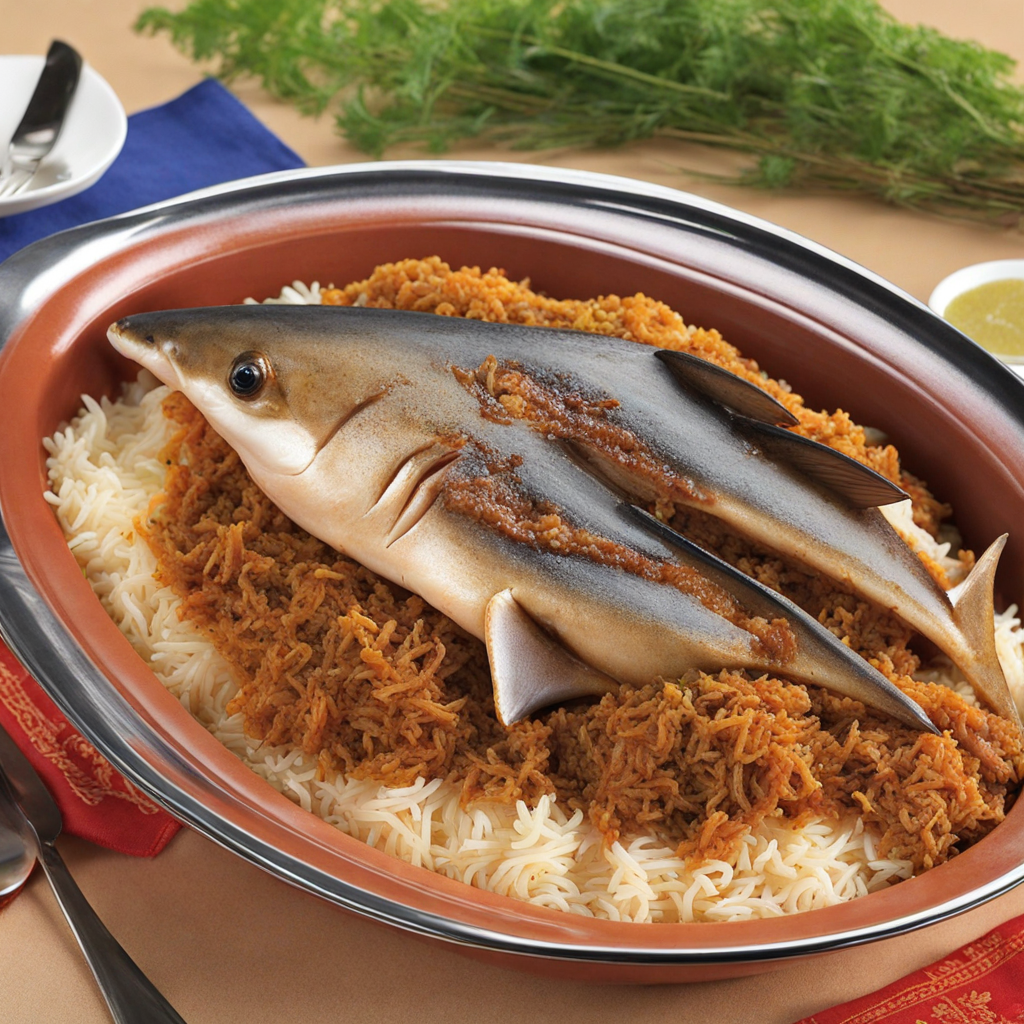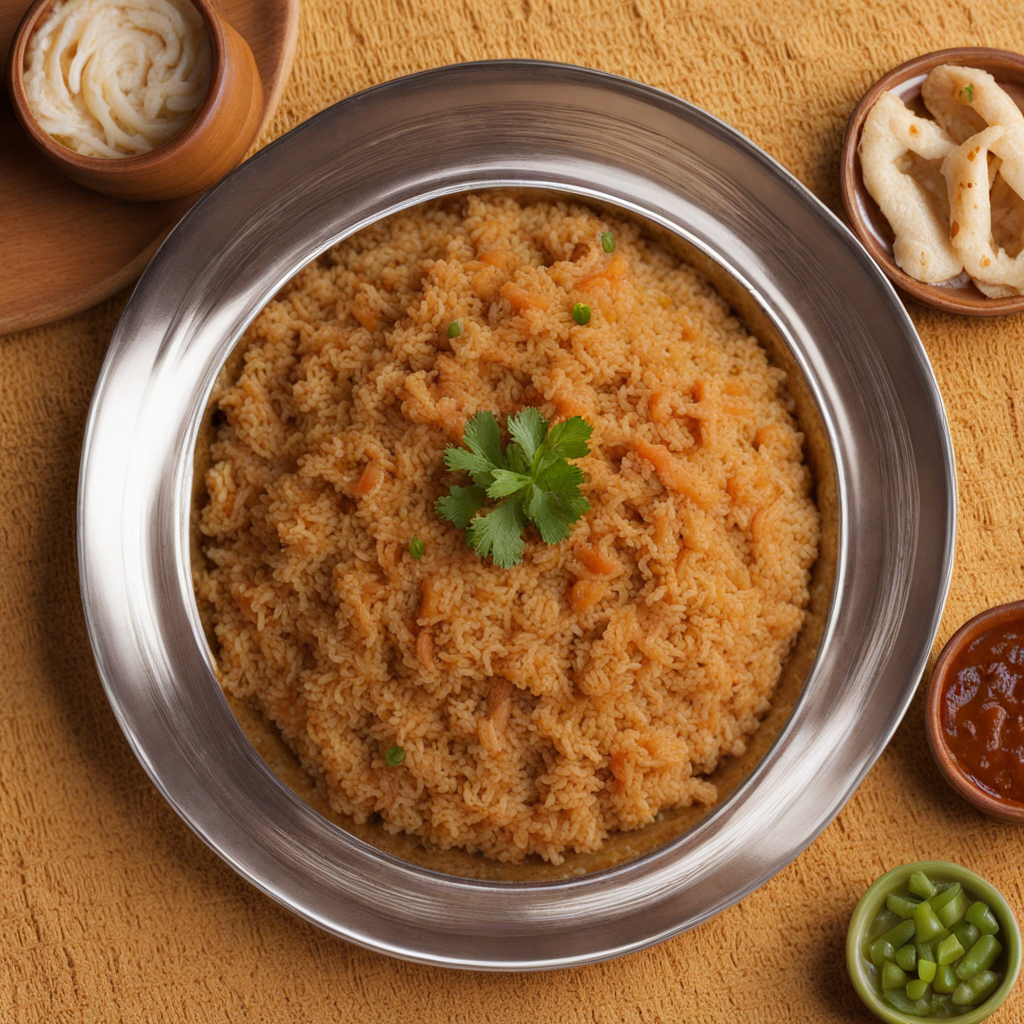Lokhemat
Lokhemat is a delightful Omani dessert that captivates the senses with its unique flavor and texture. These small, golden-brown balls are made from a simple yet satisfying dough, typically prepared using flour, sugar, and yeast. The dough is skillfully mixed and allowed to rise, resulting in a light and airy consistency that makes each bite a pleasure. Once deep-fried to perfection, Lokhemat takes on a crispy exterior while maintaining a soft, fluffy interior that melts in your mouth. What sets Lokhemat apart is its enchanting sweetness, often enhanced by the addition of fragrant spices like cardamom or cinnamon. After frying, these treats are generously drizzled with date syrup or honey, giving them a rich, caramel-like flavor that complements their lightness. The sweetness is perfectly balanced, making Lokhemat an indulgent yet not overpowering dessert, ideal for any occasion or as a delightful snack during the day. Traditionally served warm, Lokhemat is enjoyed during festive gatherings and special events in Oman, often accompanied by a steaming cup of Arabic coffee or tea. The combination of textures—the crunch of the outer shell and the tenderness of the inside, along with the aromatic sweetness—creates an unforgettable culinary experience. For those seeking to explore new flavors, Lokhemat offers a charming glimpse into Omani culture and its rich gastronomic heritage.
How It Became This Dish
The Story of Luqaimat: Oman's Sweet Legacy #### Origins and Cultural Significance Luqaimat (لقيمات), a traditional Omani dessert, translates to “little bites” in Arabic. This delightful treat has its roots deeply embedded in the culinary history of the Arabian Peninsula, particularly in Oman, where it is celebrated for its rich flavor and cultural significance. The origins of luqaimat can be traced back to the early Islamic period, where the exchange of culinary practices flourished across the Middle East, influenced by trade routes and the spread of Islam. Historical accounts suggest that luqaimat may have been inspired by similar fried dough desserts that emerged from the regions of the Levant, North Africa, and even further afield, adapting to local tastes and ingredients over centuries. It is believed that the dish was introduced to the Arabian Peninsula by traders and travelers, who brought with them a variety of cooking techniques and recipes. In Oman, the dish evolved, incorporating local flavors and ingredients, such as saffron and cardamom, which are prominent in Omani cuisine. Luqaimat is not just a dessert; it embodies a sense of community and tradition in Oman. It is often served during festive occasions, family gatherings, and religious celebrations, particularly during Ramadan. The sweet, golden balls are typically drizzled with date syrup or honey, making them a symbol of hospitality and generosity. The act of sharing luqaimat is a way to strengthen social bonds, and in Omani culture, food is a vital component of social interaction, reflecting the values of community and togetherness. #### The Ingredients and Preparation The basic ingredients for luqaimat include flour, sugar, yeast, and water. The dough is flavored with spices such as saffron and cardamom, which lend a unique aromatic quality to the dish. The batter is allowed to rise before being deep-fried in hot oil until golden brown, creating a crispy exterior while maintaining a soft and fluffy interior. The fried dough balls are then drenched in a sweet syrup, typically made from dates, sugar, and a touch of rose water or orange blossom water, enhancing their flavor profile. The preparation of luqaimat can vary from family to family, with each household often possessing its own secret recipe or method of cooking. This variation adds to the charm of the dish, making it a personal and familial experience. Preparing luqaimat often becomes a communal activity, with family members gathering in the kitchen to mix, shape, and fry the dough, further reinforcing the dish's cultural significance. #### Luqaimat Through the Ages Over the years, luqaimat has undergone several transformations while still retaining its traditional essence. During the 20th century, with the advent of modernization and globalization, the availability of ingredients and cooking equipment changed the way many traditional dishes were prepared. In Oman, many families began to experiment with luqaimat, introducing variations such as fillings made from nuts or chocolate, or even adapting the syrup to incorporate modern flavors like caramel or fruit purées. In recent years, there has been a resurgence of interest in traditional Omani cuisine, as young chefs and home cooks alike strive to preserve their culinary heritage. Luqaimat has become a popular dish not only at home but also in restaurants and cafes across Oman, often presented with a contemporary twist. Chef-led initiatives and food festivals celebrating Omani culture have also played a role in reintroducing luqaimat to a broader audience, showcasing its versatility and enduring appeal. #### Luqaimat in Modern Oman Today, luqaimat continues to hold a cherished place in Omani culinary traditions. During Ramadan, the holy month of fasting, it is common for families to prepare batches of luqaimat to break their fast, symbolizing joy and gratitude. The dish is served alongside other traditional foods and drinks, creating a festive atmosphere that brings families and friends together. Oman’s tourism industry has also embraced luqaimat, with travelers eager to experience authentic Omani cuisine. Food tours often include stops at local markets and eateries where visitors can sample freshly made luqaimat, often paired with traditional coffee or tea. This has not only elevated the status of luqaimat as a gastronomic delight but has also helped educate outsiders about the country's rich culinary heritage. Furthermore, the evolution of social media has allowed for the sharing of recipes and cooking techniques, leading to a revival of interest in traditional foods among younger generations. Home cooks are now posting videos and photos of their luqaimat preparations, sparking interest and encouraging others to engage with their culinary roots. This digital storytelling has the potential to create a global audience for Omani cuisine, further solidifying luqaimat’s place in the gastronomic landscape. #### Conclusion: A Sweet Symbol of Tradition Luqaimat is more than just a dessert; it is a symbol of Oman’s rich cultural heritage and culinary traditions. Its journey from ancient times to the modern day reflects the interplay of history, community, and adaptability. As Oman continues to embrace its culinary roots while welcoming new influences, luqaimat stands as a testament to the country’s vibrant food culture—a sweet reminder of the importance of sharing, hospitality, and the bonds that unite families and communities. Whether enjoyed at a festive gathering, during a family meal, or as a street food delicacy, luqaimat captures the essence of Omani hospitality. As Omani cuisine continues to gain recognition worldwide, this beloved dessert will undoubtedly remain a cherished part of the nation’s identity, symbolizing not only the flavors of Oman but also the warmth and generosity of its people. In every bite of luqaimat, one can taste the history, tradition, and love that has been passed down through generations, making it an enduring culinary treasure.
You may like
Discover local flavors from Oman






